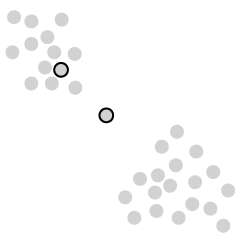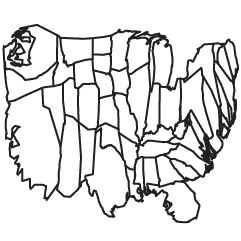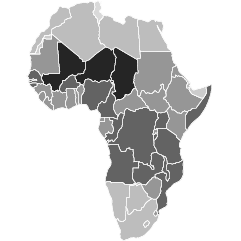Researchers recently published estimates for the amount of area undisturbed by humans — marine wilderness — left on the planet. Kennedy Elliot for National Geographic mapped the results.
-
When cyclists ride in that big pack during a race — the peloton — the ones that aren’t leading get to ride with a reduced wind resistance. Researchers found out the magnitude of the reduction.
Joshua Robinson for The Wall Street Journal:
According to a new study published in the Journal of Wind Engineering and Industrial Aerodynamics, riders in the belly of a peloton are exposed to 95% less drag than they would experience riding alone. Which explains the sensation all riders describe of being sucked along by the bunch while barely having to pedal.
-
The Upshot returns to 2016 election results mapped at the precinct level. Because you know, we all want to experience the data as many times as we can before 2020.
There’s an interesting twist though. You can randomly view “one-sided places”, where the area voted mostly the same, and “voter islands”, where the area is surrounded by opposite-voting precincts. These are made more compelling by the granular data and ease of interaction, largely made possible by Mapbox.
There’s also a 3-D view in case you want to pretend you’re looking at an election game board.
-
How to Visualize Ranges of Data in R
When you want to focus on the magnitude of differences between low and high values, use visual cues that highlight distance.
-
Cultures have formed different stories and pieced together different constellations from the stars, even though everyone are looking at the same thing in the sky. Nadieh Bremer visualized constellations across these cultures that share the same star.
Let’s compare 28 different “sky cultures” to see differences and similarities in the shapes they’ve seen in the night sky. Ranging from the so-called “Modern” or Western constellations, to Chinese, Maori and even a few shapes from historical cultures such as the Aztecs.
-
Instead of looking at only the most common job in each state, I found the top five for a slightly wider view.
-
Marta Murray-Close and Misty L. Heggeness for the Census Bureau compared income responses from the Current Population Survey against income tax reports. The former can be fudged, whereas the latter is accurate by law. The researchers found a statistical difference that suggests when a wife makes more than a husband, they report a lesser gap in the survey.
This paper compares the earnings reported for husbands and wives in the Current Population Survey with their “true” earnings from administrative income-tax records. Estimates from OLS regressions show that survey respondents react to violations of the norm that husbands earn more than their wives by inflating their reports of husbands’ earnings and deflating their reports of wives’ earnings. On average, the gap between a husband’s survey and administrative earnings is 2.9 percentage points higher if his wife earns more than he does, and the gap between a wife’s survey and administrative earnings in 1.5 percentage points lower if she earns more than her husband does. These findings suggest that gendered social norms can influence survey reports of seemingly objective outcomes and that their impact may be heterogeneous not just between genders but also within gender.
The gap shift didn’t change much, regardless if the wife reported or the husband did. However, it’s interesting that the shift tended towards a boost for the husband’s income when the wife reported and a bump down for the wife’s income when the husband reported.
-
The logistics of being a 60-foot man must be a pain.
-
The Straits Times visualized the Marvel Cinematic Universe with a 3-D browsable network. Link colors represent type of relationship, and proximity naturally represents commonalities between characters. Click on individual characters for information on each. Turn on the sound for extra dramatics.
-
-
Kevin Quealy and Josh Katz for The Upshot analyzed shoe and running data to see if Nike’s Vaporfly running shoes really helped marathoners achieve faster times. Accounting for a number of confounding factors, the results appear to point to yes.
We found that the difference was not explained by faster runners choosing to wear the shoes, by runners choosing to wear them in easier races or by runners switching to Vaporflys after running more training miles. Instead, the analysis suggests that, in a race between two marathoners of the same ability, a runner wearing Vaporflys would have a real advantage over a competitor not wearing them.
Very statistics-y, even for The Upshot. I like it.
It takes me back to my fourth grade science fair project where I asked: Do Nike’s really make you jump higher? Our results pointed to yes too. Although our sample size of five with no control or statistical rigor might not stand up to more technical standards. My Excel charts were dope though.
-
Birth control is one of those topics often saved for private conversations, so people’s views are often anecdotal. Someone knows what their friend, family member, etc used, but not much else. Amber Thomas for The Pudding provides a wider view of birth control using data from the CDC’s ongoing National Survey of Family Growth.
You see what other people use, how the method changes with age, and side effects. There’s a Clippy-like character for added information on the different methods. So there’s a good amount of information there to make the choice that’s right for you.
Sidenote on the NSFG data: I looked at the data a few times. It’s a good, messy dataset to explore if you want some practice.
-
After seeing polar charts of street orientation in major cities, Vladimir Agafonkin, an engineer at Mapbox, implemented an interactive version that lets you see directions for everywhere:
Extracting and processing the road data for every place of interest to generate a polar chart seemed like too much work. Could I do it on an interactive map? It turns out that this is a perfect use case for Mapbox vector maps — since the map data is there on the client, we can analyze and visualize it instantly for any place in the world.
Fun.
So someone’s going to take the next step to rank and rate griddyness around the world, right?
-
Sapna Maheshwari for The New York Times on Samba TV software running on smart televisions:
Once enabled, Samba TV can track nearly everything that appears on the TV on a second-by-second basis, essentially reading pixels to identify network shows and ads, as well as programs on HBO and even video games played on the TV. Samba TV has even offered advertisers the ability to base their targeting on whether people watch conservative or liberal media outlets and which party’s presidential debate they watched.
I feel like this is something most people don’t want.
-
[arve url=”https://www.youtube.com/watch?v=kS53y6GWm0w” /]
Many have found Amazon’s Alexa devices to be helpful in their homes, but if you can’t physically speak, it’s a challenge to communicate with these things. So, Abhishek Singh used TensorFlow to train a program to recognize sign language and communicate with Alexa without voice.
Nice.
-
With Twitter cracking down, some users are experiencing bigger dips in follower count than others. Jeremy Ashkenas charted some of the drops.
-
The Rush Hour puzzle game was invented by Nob Yoshigahara in the 1970s and made its way to the United States in the 1990s. There are vehicles of varying length in a parking lot, and you have to figure out how to get one of the cars out by shifting all the others inside a six-by-six grid. Michael Fogleman wrote a solver and generator for the game, resulting in a database of 1.5 million puzzles.
-
Earlier this year, The New York Times investigated fake followers on Twitter showing very clearly that it was a problem. It’s hard to believe that Twitter didn’t already know about the scale of the issue, but after the story, the social service finally started to work on the problem.
Nicholas Confessore and Gabriel J.X. Dance for The New York Times:
An investigation by The New York Times in January demonstrated that just one small Florida company sold fake followers and other social media engagement to hundreds of thousands of users around the world, including politicians, models, actors and authors. The revelations prompted investigations in at least two states and calls in Congress for intervention by the Federal Trade Commission. In interviews this week, Twitter executives said that The Times’s reporting pushed them to look more closely at steps the company could take to clamp down on the market for fakes, which is fueled in part by the growing political and commercial value of a widely followed Twitter account.
This is statistics driving positive change instead of just advertising. I’m ready for more of this.
-
Using OpenStreetMap data, Geoff Boeing charted the orientation distributions of major cities:
Each of the cities above is represented by a polar histogram (aka rose diagram) depicting how its streets orient. Each bar’s direction represents the compass bearings of the streets (in that histogram bin) and its length represents the relative frequency of streets with those bearings.
So you can easily spot the gridded street networks, and then there’s Boston and Charlotte that are a bit nutty. Check out Boeing’s other chart for orientation of major non-US cities.
See also Stephen Von Worley’s color-coded maps and Seth Kadish’s charts from 2014 that showed the same thing but used Census data instead of OpenStreetMap.
-
The trade war started in January of this year when the administration imposed tariffs on 18 solar panel and washing machine products. Then the United States imposed more, and countries returned the favor on U.S. products, which ballooned the product count to 10,000. Keith Collins and Jasmine C. Lee for The New York Times chronicled the shifts with force-directed bubbles.
So many bubbles. Maybe we should just get it over with and impose tariffs on all the things now.





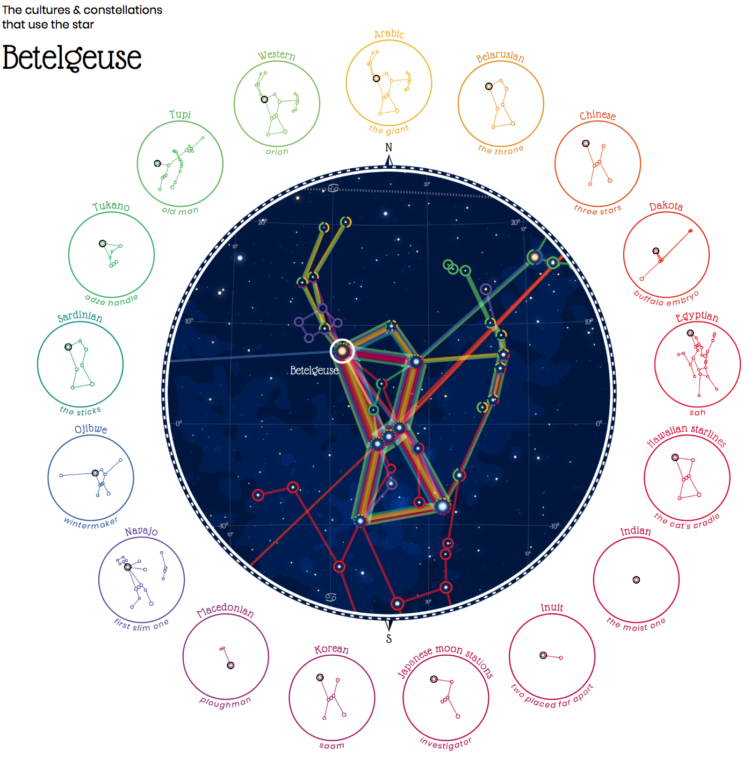
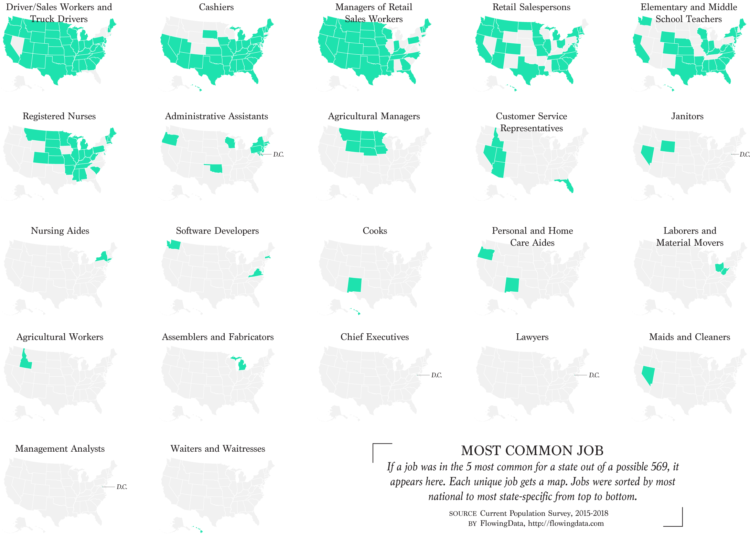
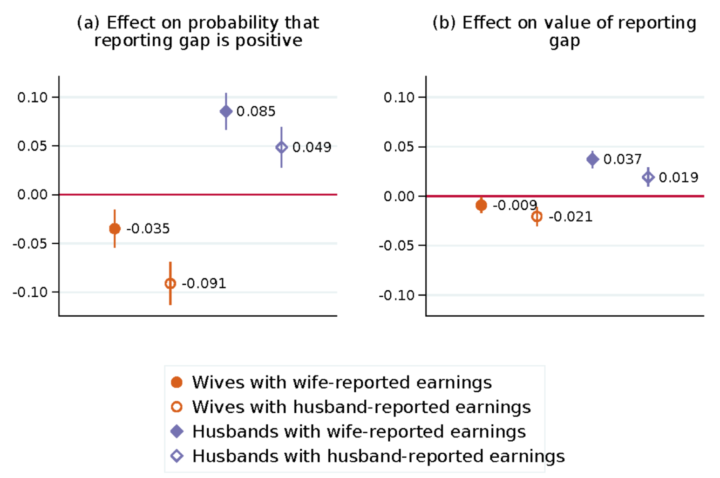
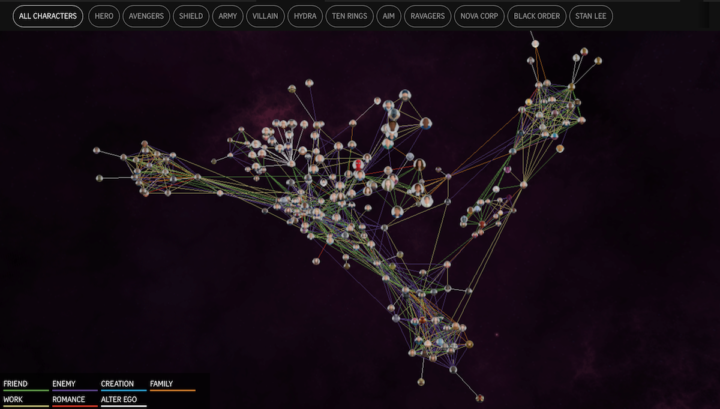
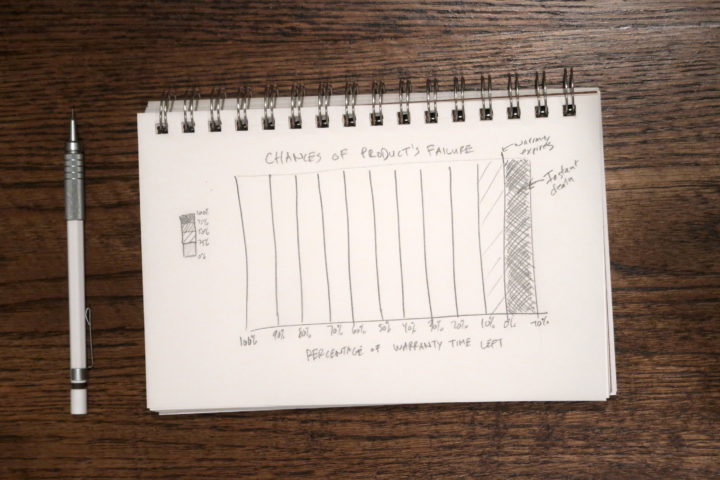
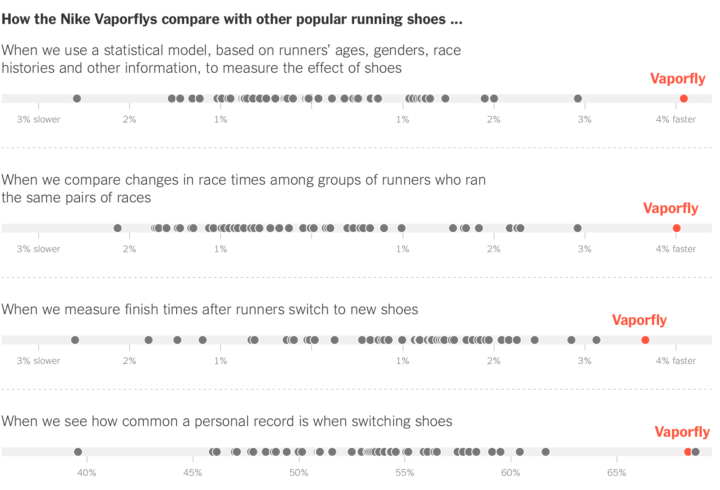



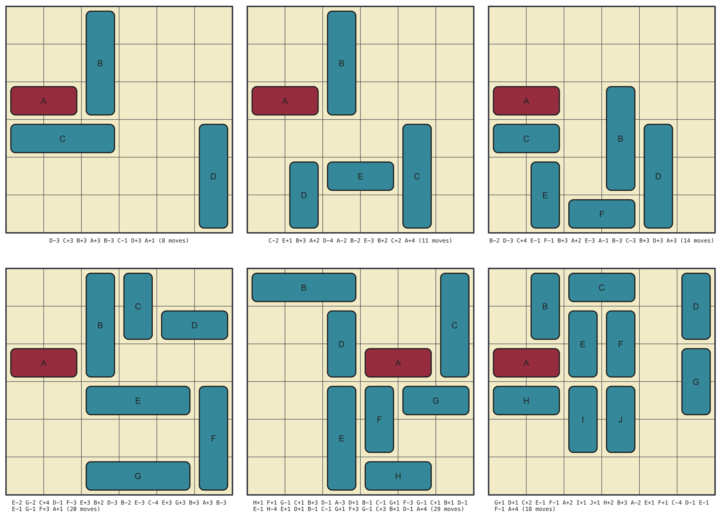
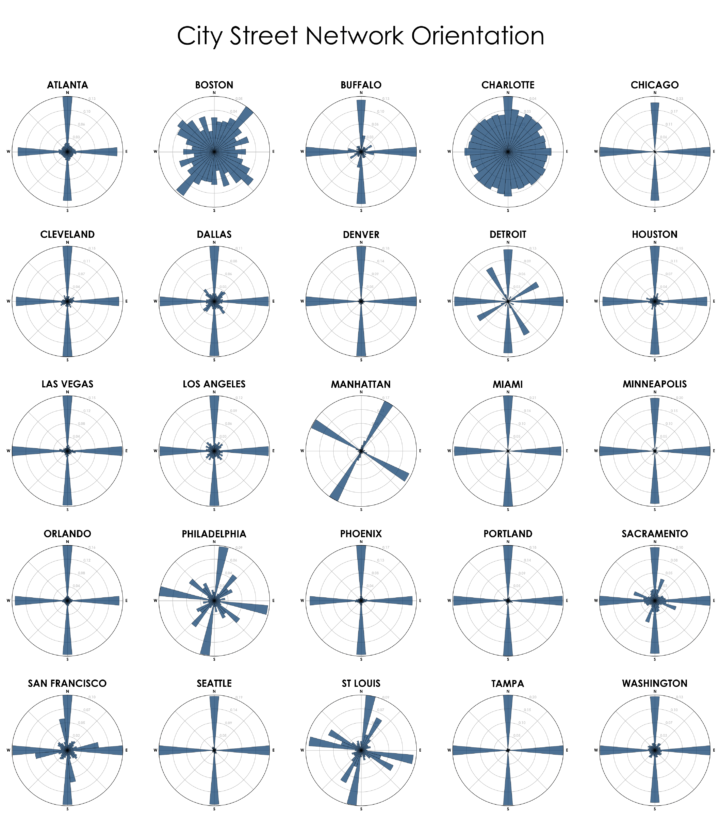
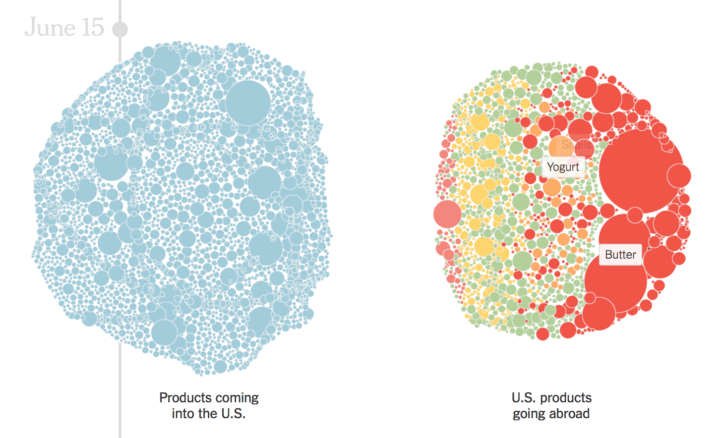
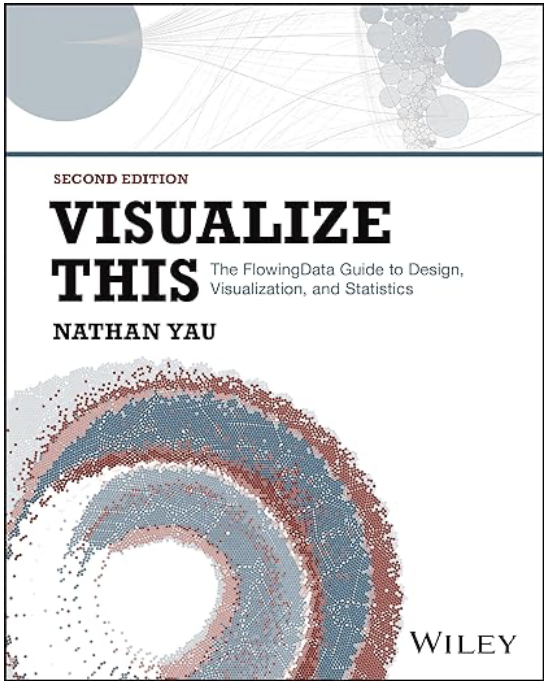 Visualize This: The FlowingData Guide to Design, Visualization, and Statistics (2nd Edition)
Visualize This: The FlowingData Guide to Design, Visualization, and Statistics (2nd Edition)
